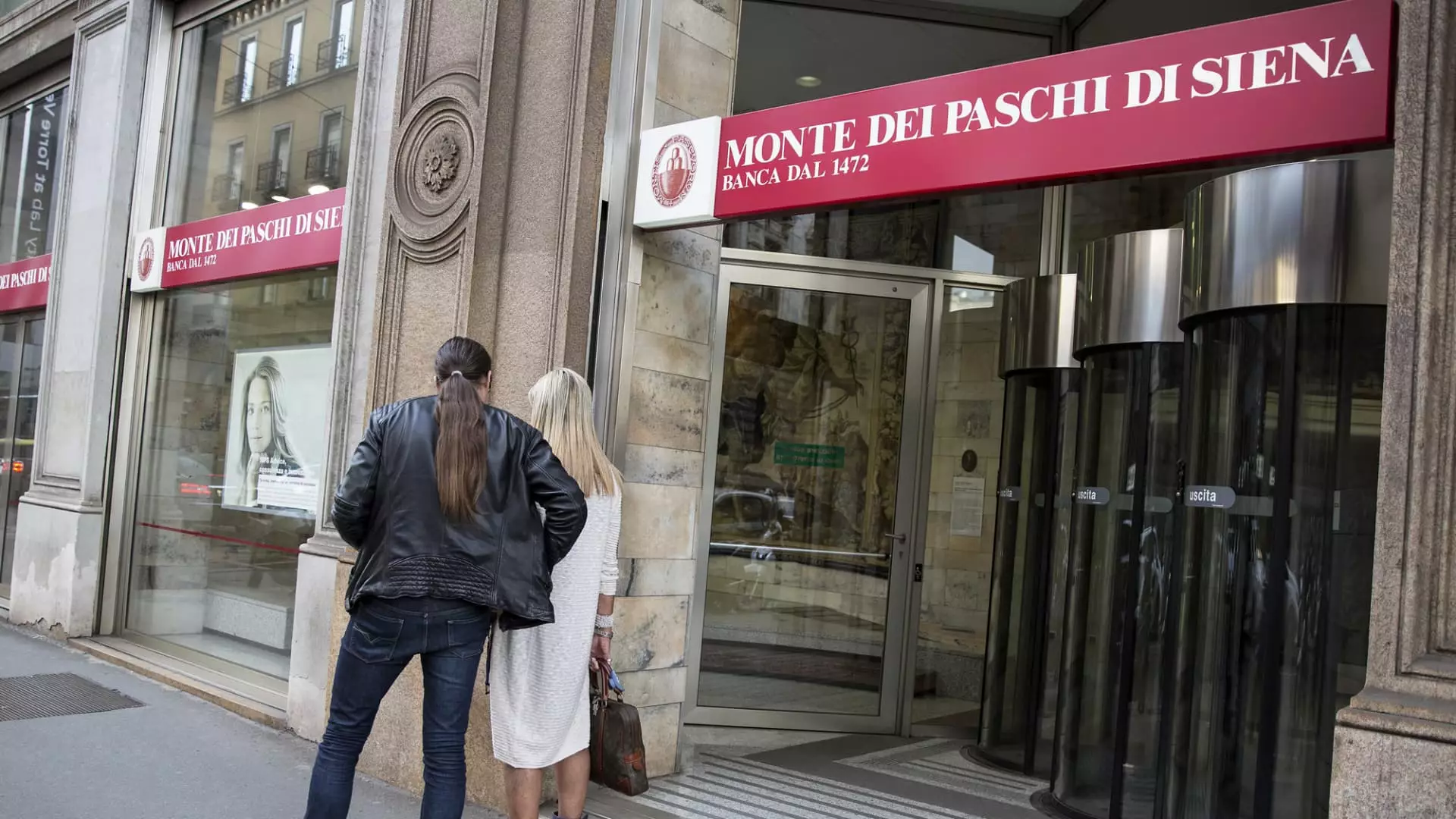Monte dei Paschi di Siena, the world’s oldest surviving bank, has taken a surprising step in the current volatile financial landscape, announcing its intention to acquire Mediobanca—an emblematic player in wealth management and investment banking—for an eye-popping €13 billion ($14.3 billion). This bold gesture reflects a resurgent confidence from a bank that has faced significant trials over the last decade, primarily culminating in a government bailout in 2017. After much skepticism from investors and analysts alike, CEO Luigi Lovaglio insists that Monte dei Paschi is “back” and determined to regain its footing as a leading force in the Italian banking sector.
The Proposal and Its Reception
The all-share offer for Mediobanca has not been met with enthusiasm. The target company has branded Monte dei Paschi’s proposal as “destructive,” claiming that it lacks financial soundness. This rejection underscores a critical undercurrent within the financial community: the apprehension surrounding the synergies of merging two distinctly different banking cultures. Mediobanca’s dismissal of the offer raises pertinent questions about the rationale behind Monte dei Paschi’s aggressive acquisition strategy. While Lovaglio maintains that the current market dynamics highlight the necessity for larger banking entities that are versatile in revenue generation, the actual potential for meaningful collaboration remains dubious.
The Shadow of Recent Market Turbulence
Market fluctuations have instilled a degree of caution in financial transactions this year, with some firms placing their growth plans on pause. The hesitance permeates through the industry, from British private equity postponements to fintech companies rearranging their IPO timelines. In contrast to this backdrop of caution, Monte dei Paschi’s commitment to pursuing its acquisition plans creates a striking dichotomy. Lovaglio insists that the current turbulence reinforces the argument for expansion rather than dissuasion, claiming that a merged entity would boast enhanced strength and agility in responding to market changes.
Analysts’ Divided Opinions
The outlook among analysts reveals a spectrum of opinions regarding the potential ramifications of this acquisition. While Deutsche Bank advocates for the overlooked opportunities within Monte dei Paschi, others approach the situation with skepticism. Barclays, for example, has revised its price target downward, flagging concerns over potential capital erosion should Monte dei Paschi need to sweeten its offer. Such contrasting analyses reflect the prevailing ambiguity regarding the actual benefits of this merger, further complicating Monte dei Paschi’s ambitions.
The Quest for Consolidation
Louigi Lovaglio positions this attempted acquisition within the context of an evolving Italian banking landscape, emphasizing that it could kickstart a “first wave” of domestic consolidation. Similar initiatives, like UniCredit’s proposed takeover of Banco BPM, suggest a broader trend toward consolidation. However, as the recent rejections and market reactions illustrate, the pathway to successful mergers is fraught with challenges, especially when cultural and operational disparities exist between organizations.
Market Reactions and Implications
The recent market responses to the proposed deal have been tepid at best. With shares of both Monte dei Paschi and Mediobanca dropping by approximately 5% in the wake of the announcement, investor confidence seems to be waning. Since the proposal’s unveiling, Mediobanca’s stock has plummeted by around 14%, while Monte dei Paschi has suffered a decline of nearly 8.5%. Such declines raise concerns about the feasibility of Alli’s notion that market dynamics may currently favor larger entities—unless tangible strategies are developed to effectively merge operations and cultures.
As the July deadline approaches for the completion of this audacious acquisition attempt, only time will tell whether Monte dei Paschi’s optimistic forecasts can weather the storms of market skepticism and actualize a vision of a more diversified and integrated banking giant in Italy. The banking sector is poised at a crossroads, and how Monte dei Paschi navigates these challenges may dictate its trajectory for decades to come.

